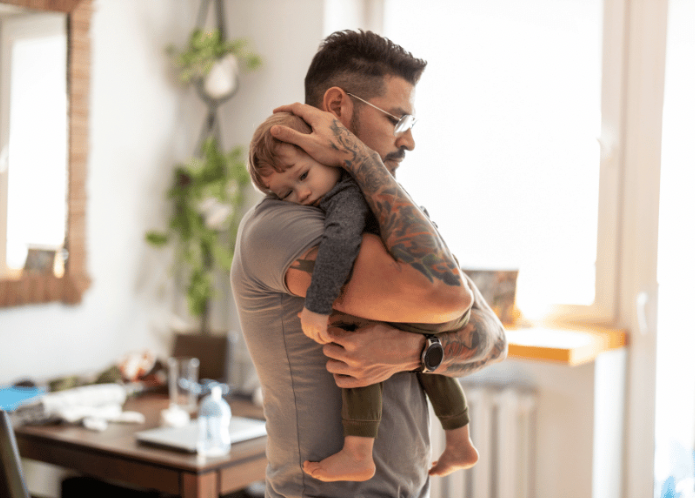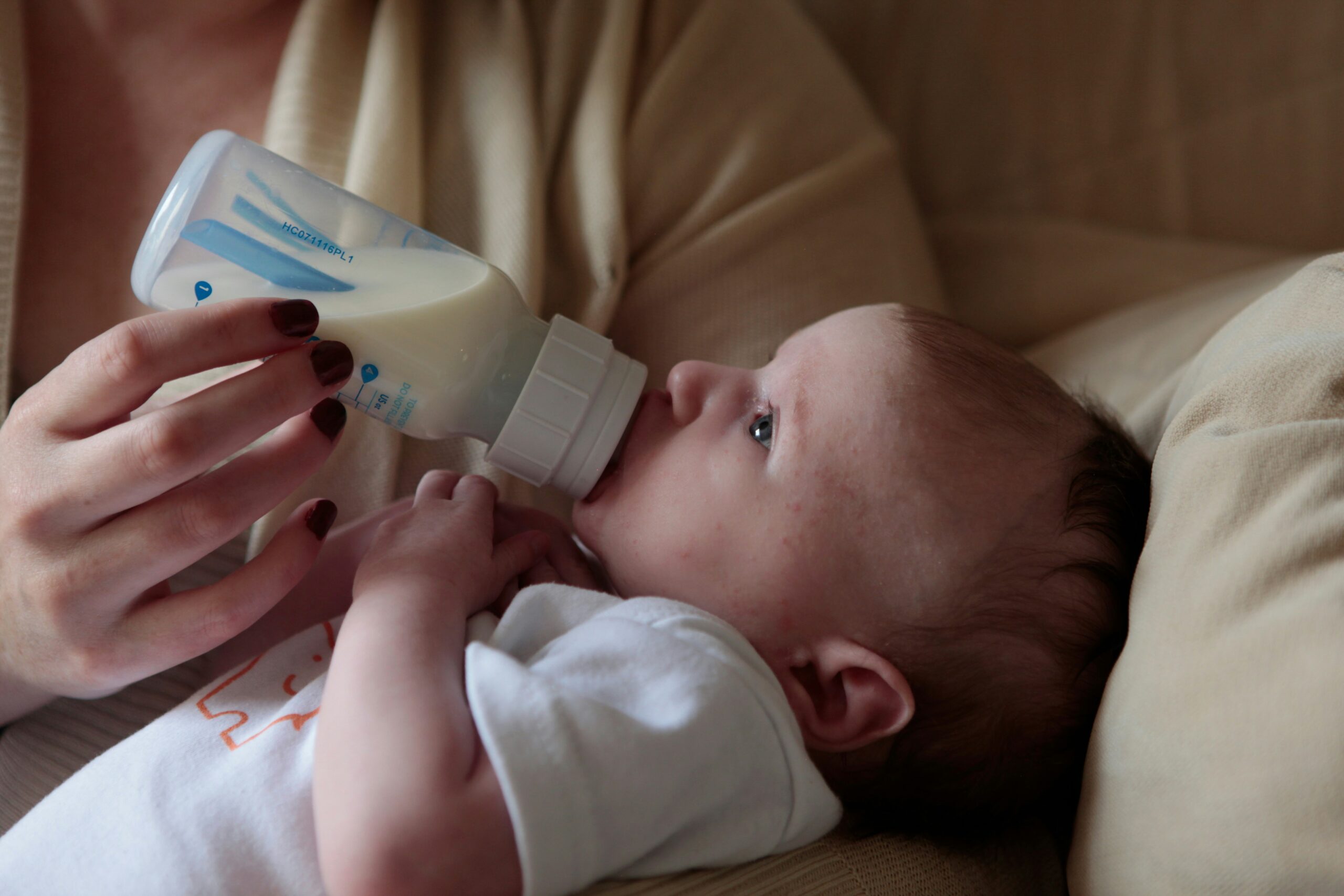Separation anxiety might actually be harder on you that it is on your child. This feeling is normal! Before you dive into our tips on how to survive separation anxiety, remember that what works for one child could be different from what works for another.
Separations can be TOUGH on kids – but especially on parents! Showing signs of separation anxiety is developmentally appropriate and can pop up at different points in childhood. Babies first show signs of separation anxiety around 8 months because they develop a stronger understanding of “object permanence” (this is a sign of brain development!). They are beginning to realize that objects and people continue to exist when they’re out of sight. You leave the room and your baby has the cognitive skills to miss you! Then around 5 to 8 years old, children start to have a better understanding of the world and its dangers. They might ask more questions than when they were younger about where you’re going, when you’ll return, and a thousand other questions to feel reassured that you’ll come back safe and sound.
Before you dive into our tips on how to survive separation anxiety, remember that what works for one child could be different from what works for another. Consider your child’s unique temperament when trying out different approaches to supporting them through separation anxiety. Here’s the other thing – separation anxiety might actually be harder on you that it is on your child. This feeling is normal, but while you’re crying walking back to your car post drop-off, remember that your child is likely recovering (or already recovered) before you. Even though the goodbyes can feel challenging, don’t forget that by leaving your child with another caregiver (whether it’s a nanny, a daycare provider, a family member), you are teaching them that separations and reunions are a normal part of life.
What to Try:
- Stay calm and regulate your own emotions. Your child looks to you to understand how to feel and react in new situations, and they notice both verbal and nonverbal cues. When you are calm, it signals to your child that there is nothing dangerous happening. This is especially important if you’re feeling nervous about the separation. Keep your own reaction private, so that your child has confidence in the separation.
- Validate your child’s feelings, and let them know that you understand how they feel. Remind them that you will always come back and that they are safe.
- Short and sweet goodbyes. Come up with a silly goodbye handshake to do together each time you separate. Remember, our children thrive off of routines! Keeping it short and sweet helps prevent goodbyes from becoming long and drawn out.
- Talk your child through the different transitions they’ll experience throughout the day and when they will see you again. When your child knows what to expect, they’re better equipped to self regulate because it alleviates some of their uncertainty. This might sound like “Today Grandma is coming over to play with you for a few hours. You two are going to do so many fun things together” or “We’re on our way to school. Mommy is going to walk you into your classroom, give you a big smooch and a high five, and then I’ll see you later!”
- Don’t sneak out. It can be tempting to avoid situations that trigger fear. Although this may make a child feel safe in the short term, it takes away the opportunity for them to learn to regulate their emotions during a separation. So, don’t sneak out and be truthful with your child about where you’re going and for how long. If you disappear without telling them, it could erase the progress that you’ve made together practicing.
- Don’t be afraid to ask for help! There are so many ways you can do this. Is drop-off a particularly challenging time for you and your child? Ask for someone else to drop off. Of course you can always speak with your child’s nanny, daycare provider, or family member to talk through some challenges around separation. Some daycares/schools have certain approaches that they like to follow to keep goodbyes short and sweet (and easiest for all children in the classroom). Check in with your child’s daycare/school and see what the expectations are on their end.
- Distract, distract, distract. This works especially well with the younger crowd. Consider what distraction will win your child over. Is it the dump truck outside the window? Friends at the dress up corner? A new book to show Grandma? Work with your co-parent/partner, nanny, or daycare provider to identify distractions to make the transition easier.
Note: If your child is struggling (or has struggled) with separations at school, work with your child’s teacher to create a plan.
- If the school year hasn’t started yet, ask your child’s teacher if you can visit the classroom prior to the first day of school.
- Talk about how excited you are about their teacher to show them that you trust that person – and they can too.
- Bring in an object, like a lego in your pocket or a hair band on their wrist. This is a quick and easy way for your child to remember you love them while they’re off at school.
- Be truthful about your location. For example, don’t promise that you’ll be in the school lobby waiting for them if you won’t be.
- Remember – short and sweet goodbyes!
If you’ve tried everything here and still have concerns about your child’s ability to tolerate separation and/or you feel that their separation anxiety is interfering with their ability to engage in age-appropriate activities, you may want to consider a more gradual approach, or ask your child’s healthcare provider for more support.
This post originally appeared on YourCooper.com, your go-to for live, interactive parent coaching and curated group sessions. For discounts and member exclusives on Cooper, visit our Shop and Parent Log-In pages.



